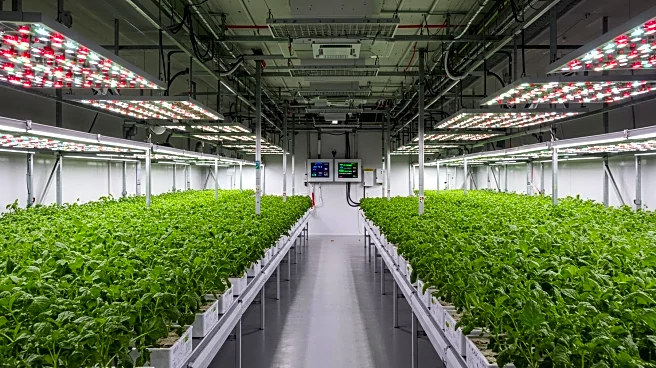What is the story about?
What's Happening?
The global indoor farming technology market is expected to grow significantly, reaching USD 23.6 billion by 2034. This expansion is driven by increasing urban populations, shrinking farmland, and unpredictable climate conditions, which are fueling the demand for sustainable, year-round crop production. Indoor farming, which includes vertical farms, greenhouses, container farms, and grow rooms, utilizes modern equipment such as LED lighting, hydroponics, aeroponics, climate control systems, and advanced sensors combined with smart software and automation to enhance yields and reduce resource use. In 2023, over half of new urban agriculture businesses in North America and Asia Pacific adopted precision indoor farming techniques.
Why It's Important?
The growth of indoor farming technology is crucial for addressing food security needs and supporting urban farming innovations. As urbanization continues, the demand for local, pesticide-free produce is increasing, prompting cities to adopt controlled-environment agriculture. Governments are supporting these initiatives with plans like Singapore's '30 by 30' to meet 30% of nutritional needs domestically by 2030. Technology plays a significant role, with AI-assisted crop monitoring and sensor-based irrigation helping maximize production while minimizing resource use. Indoor farming's ability to use up to 95% less water than traditional farming and eliminate pesticide use makes it attractive for environmental and health reasons.
What's Next?
The indoor farming technology market faces challenges such as high start-up costs, energy expenses, and the need for skilled labor. Crop selection impacts profitability, with leafy greens and herbs being more viable than staple crops like grains. Regulatory requirements, consumer acceptance, and concerns over energy use also pose challenges. Despite these hurdles, the market is expected to continue growing, with innovations in vertical farming, LED lighting, smart farming, and automation driving further advancements.
AI Generated Content
Do you find this article useful?















